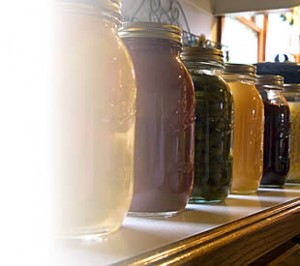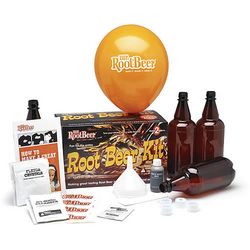
My friend, Michelle, says that she is so thrifty that Lincoln weeps when a penny passes through her tight fingers. I suspect I’m among friends here and can confess that I share the cheap gene. In fact, one of my favorite pastimes is scouting out the supermarket for tasty-looking treats and figuring out how to make something similar at home. I like knowing just what’s in the food I serve my family and I love saving the money that commercial products require. I like to keep packaging out of the waste stream. I have the occasional flop (home-made granola bars that were so dry they fed the chickens rather that the children). I have a lot of successes too! Recently I added Vegetable Juice Blend to that list.

I have long been a fan of tomato/vegetable juice blends but when I read the sodium content on a bottle I stopped buying it. I have a long family history of high blood pressure and I know I need to watch the salt. I started working on a home-made version that had the flavor without all the salt. Fortunately, I have my trusty steam juicer and I put that to work.
The tricky part was less about finding the right mix of vegetables than it was about figuring out the ratio of high-acid tomatoes to the other low-acid vegetables. This wouldn’t matter if I was going to freeze the juice or drink it fresh but as I planned to can it, it mattered a lot. If the ratio was right, I knew I could water-bath the juice, keeping more of the fresh flavor I was after. Too many low-acid vegetables would mean I would have to pressure-can the juice. That’s not a huge problem but I could not decide on the proper time.
If I went with canning as I would for the most finicky ingredient, 40 minutes at ten pounds of pressure for a quart jar of vegetables, I was afraid the juice would lose nutrition and flavor. I certainly wasn’t going to risk improper canning so I did the research to come up with a solution.
As I so often do, I went with the information provided by the University of Georgia National Center for Home Food Preservation. For 22 pounds of tomatoes you can add up to three cups of other, low-acid vegetables. I went light on onions and heavy on cucumber, carrot and parsley. I also tossed in some celery and a beet. Everything was washed well and then cut into chunks. I had a quarter of cup left to play with and I used up the end of the garden spinach for that.
A few of the tomatoes had some damage and I cut off those parts. I filled the water reservoir of the steam juicer with water and a few marbles, the better to hear if the water boils out. The vegetables went into the steamer basket. The steamer was set on my canning stove over medium heat and that was that. I stirred the pot a few times to get the juice flowing and only 45 minutes I turned off the stove and peeked inside the juicer.

What remained was a mash of vegetable slop. If I wanted a clear juice, I would have stopped there but I was actually going for a bit more body so I used my potato masher to extract every bit of pulp I could. The juice was drained right into hot, quart-sized canning jars. I added a teaspoon of salt and 2 tablespoons of bottled lemon juice, topped with a hot lid and ring and put the jars into my canner. I water bathed canned the juice for 40 minutes.
I have some older canning books that say you can add a lot more vegetables and still use a water bath and maybe you can. However, when it comes to canning I always go with the most conservative directions.

So. How was it? Not bad actually. The flavor was lighter than the commercial version and I must say I thought it needed more salt although I resisted adding any. Here’s the thing about cooking from scratch. If what we compare our food to is highly salted, highly sweetened, high fat versions of real food, our own food may seem bland at first. We are conditioned to like fat and sugar and salt and the typical American diet is full of that stuff. But if we give our palates a chance to adjust, we will come to prefer food that is closer to the way nature intended it to be consumed. We can learn to enjoy the nuances and complexity of flavors. My jars of juice, lined up on my pantry, will do just fine.
































That steam juicer I rate A++++++. Makes my grape harvest so easy to deal with~don’t know how I lived without it! Seriously!
I love mine too! Used it to fill up my freezer with pear/apple juice for the winter. Also made some nice jelly with some of the juice.